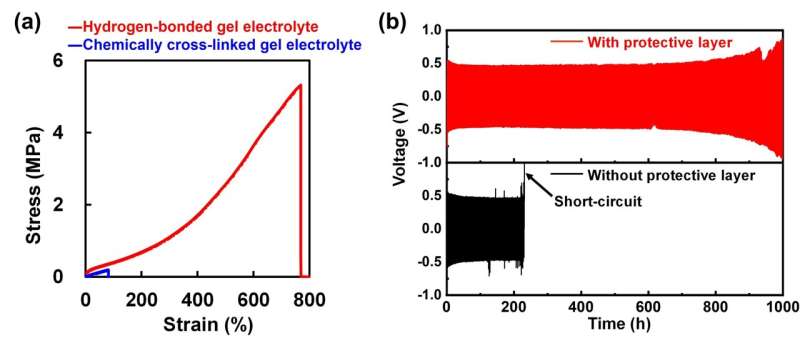
A National Institute for Materials Science (NIMS) research team has succeeded in substantially improving the cycling performance of a lithium metal battery by developing a mechanically very strong polymeric gel electrolyte and integrating it into the battery as a layer to protect the lithium metal anode. This achievement may greatly facilitate efforts to put lithium metal anodes—a potentially very high performance anode material—into practical use.
This research was published in Advanced Materials.
Today’s society is rapidly transforming through the widespread use of digital technologies, the increasing popularity of electric vehicles and the growing use of renewable energy. These shifts have created a steadily rising demand for higher performance lithium secondary batteries. Lithium metal anodes have very large theoretical capacities and low working potentials.
However, they also have an issue: the process of lithium dissolution and deposition, which occurs as the battery is charged and discharged, is prone to deterioration, shortening the batteries’ charge-discharge cycle lives and posing safety concerns. New technologies capable of stabilizing the charge-discharge cycles of secondary batteries equipped with lithium metal anodes are therefore needed.
This research team developed mechanically tough and stretchable gel electrolytes formed by an organic solvent electrolyte containing a high concentration of lithium salts and a hydrogen-bonded polymer. The team then integrated this gel electrolyte as an artificial layer to protect the lithium metal anode. Experiments demonstrated that the addition of the protective layer significantly improved the battery’s cycling stability.
In future research, the research team plans to optimize the gel electrolyte for use as a protective layer and evaluate the layer’s effectiveness when combined with various types of electrolytes and next-generation cathodes. The team hopes that this technology will contribute to efforts to put next-generation lithium secondary batteries equipped with lithium metal anodes into practical use.
